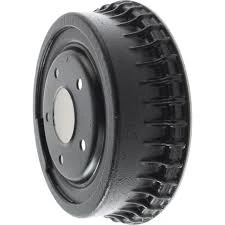
-
 Afrikaans
Afrikaans -
 Albanian
Albanian -
 Amharic
Amharic -
 Arabic
Arabic -
 Armenian
Armenian -
 Azerbaijani
Azerbaijani -
 Basque
Basque -
 Belarusian
Belarusian -
 Bengali
Bengali -
 Bosnian
Bosnian -
 Bulgarian
Bulgarian -
 Catalan
Catalan -
 Cebuano
Cebuano -
 Corsican
Corsican -
 Croatian
Croatian -
 Czech
Czech -
 Danish
Danish -
 Dutch
Dutch -
 English
English -
 Esperanto
Esperanto -
 Estonian
Estonian -
 Finnish
Finnish -
 French
French -
 Frisian
Frisian -
 Galician
Galician -
 Georgian
Georgian -
 German
German -
 Greek
Greek -
 Gujarati
Gujarati -
 Haitian Creole
Haitian Creole -
 hausa
hausa -
 hawaiian
hawaiian -
 Hebrew
Hebrew -
 Hindi
Hindi -
 Miao
Miao -
 Hungarian
Hungarian -
 Icelandic
Icelandic -
 igbo
igbo -
 Indonesian
Indonesian -
 irish
irish -
 Italian
Italian -
 Japanese
Japanese -
 Javanese
Javanese -
 Kannada
Kannada -
 kazakh
kazakh -
 Khmer
Khmer -
 Rwandese
Rwandese -
 Korean
Korean -
 Kurdish
Kurdish -
 Kyrgyz
Kyrgyz -
 Lao
Lao -
 Latin
Latin -
 Latvian
Latvian -
 Lithuanian
Lithuanian -
 Luxembourgish
Luxembourgish -
 Macedonian
Macedonian -
 Malgashi
Malgashi -
 Malay
Malay -
 Malayalam
Malayalam -
 Maltese
Maltese -
 Maori
Maori -
 Marathi
Marathi -
 Mongolian
Mongolian -
 Myanmar
Myanmar -
 Nepali
Nepali -
 Norwegian
Norwegian -
 Norwegian
Norwegian -
 Occitan
Occitan -
 Pashto
Pashto -
 Persian
Persian -
 Polish
Polish -
 Portuguese
Portuguese -
 Punjabi
Punjabi -
 Romanian
Romanian -
 Russian
Russian -
 Samoan
Samoan -
 Scottish Gaelic
Scottish Gaelic -
 Serbian
Serbian -
 Sesotho
Sesotho -
 Shona
Shona -
 Sindhi
Sindhi -
 Sinhala
Sinhala -
 Slovak
Slovak -
 Slovenian
Slovenian -
 Somali
Somali -
 Spanish
Spanish -
 Sundanese
Sundanese -
 Swahili
Swahili -
 Swedish
Swedish -
 Tagalog
Tagalog -
 Tajik
Tajik -
 Tamil
Tamil -
 Tatar
Tatar -
 Telugu
Telugu -
 Thai
Thai -
 Turkish
Turkish -
 Turkmen
Turkmen -
 Ukrainian
Ukrainian -
 Urdu
Urdu -
 Uighur
Uighur -
 Uzbek
Uzbek -
 Vietnamese
Vietnamese -
 Welsh
Welsh -
 Bantu
Bantu -
 Yiddish
Yiddish -
 Yoruba
Yoruba -
 Zulu
Zulu
Advantages of Using Drum Brakes in Automotive Applications and Safety Performance
The Benefits of Drum Brakes A Comprehensive Overview
Drum brakes have been a fundamental component of automotive braking systems for decades. While modern vehicles increasingly feature disc brakes, drum brakes still hold their ground in many applications, especially in older models and some economy vehicles. Understanding the benefits of drum brakes provides insight into their continued relevance in the automotive industry.
1. Cost-Effectiveness
One of the primary advantages of drum brakes is their cost-effectiveness. The manufacturing process for drum brakes is generally less expensive than that of disc brakes. This makes them a popular choice for budget-friendly vehicles. Additionally, drum brakes typically require less frequent replacement. This can lead to lower long-term maintenance costs compared to disc brakes, which may require more frequent servicing and replacements due to their design and exposure to environmental factors.
2. Better Performance in Certain Conditions
Drum brakes excel in specific driving conditions, particularly in terms of performance under heavy loads. They can offer superior stopping power on vehicles that are regularly used for towing or carrying heavy payloads. This is because the design of drum brakes allows for a larger surface area where friction can occur between the brake shoes and the drum itself. This enhanced friction can result in more powerful braking performance, essential for trucks and heavier vehicles.
3. Enhanced Protection Against Debris
Another significant benefit of drum brakes is their ability to keep brake components protected from debris and contaminants. The enclosed design of drum brakes helps to shield brake shoes and other vital components from mud, dirt, and water. This protection can reduce the likelihood of corrosion and wear, extending the life of the braking system. In contrast, disc brakes are more exposed and can accumulate grime and debris, which may necessitate more frequent cleaning and maintenance.
benefits of drum brakes

4. Progressive Braking Action
Drum brakes provide a unique advantage in terms of progressive braking action. This means that the braking force increases gradually rather than abruptly. As the brake pedal is pressed, the shoes expand outward and make contact with the drum surface, allowing for smooth and controlled stopping power. This can enhance driver comfort, particularly in vehicles that may experience harsh braking conditions.
5. Less Likely to Fade
Brake fade refers to the reduction in stopping power experienced during prolonged braking, commonly associated with disc brakes. Drum brakes typically experience less fade under normal driving conditions, making them a reliable option for situations requiring sustained braking pressure, such as long downhill descents. This resilience is largely due to the larger thermal mass of the drum, which helps dissipate heat more effectively.
6. Effective in Low-Speed Applications
For applications like parking and emergency brakes, drum brakes are highly effective. Their ability to maintain braking force without significant wear make them ideal for scenarios where constant force is necessary, such as holding a vehicle stationary on a slope. This characteristic makes them a popular choice for rear brakes in many vehicles, especially in the economy segment.
Conclusion
While disc brakes have become the standard in many modern vehicles due to their efficiency and performance, drum brakes continue to offer a host of benefits that should not be overlooked. Their cost-effectiveness, enhanced protection from debris, and superior performance under certain conditions make them an enduring choice in specific applications. As automotive technology continues to evolve, drum brakes remain a vital component of overall vehicle safety and performance. Understanding these benefits can help drivers and manufacturers make informed decisions about braking system choices based on needs and circumstances.
-
What Are Drum BrakesNewsJul.07,2025
-
Understanding Brake Drum MaterialNewsJul.07,2025
-
Semi-Trailer Brake Drum: A Key Component for Extreme Loads and Long-Distance TransportNewsJul.07,2025
-
Drum Brake Pads for SaleNewsJul.07,2025
-
Brake Drums for SaleNewsJul.07,2025
-
Brake Drum ManufacturerNewsJul.07,2025
-
Aluminum Brake Drums: The Future of High-Performance CarsNewsJul.07,2025
